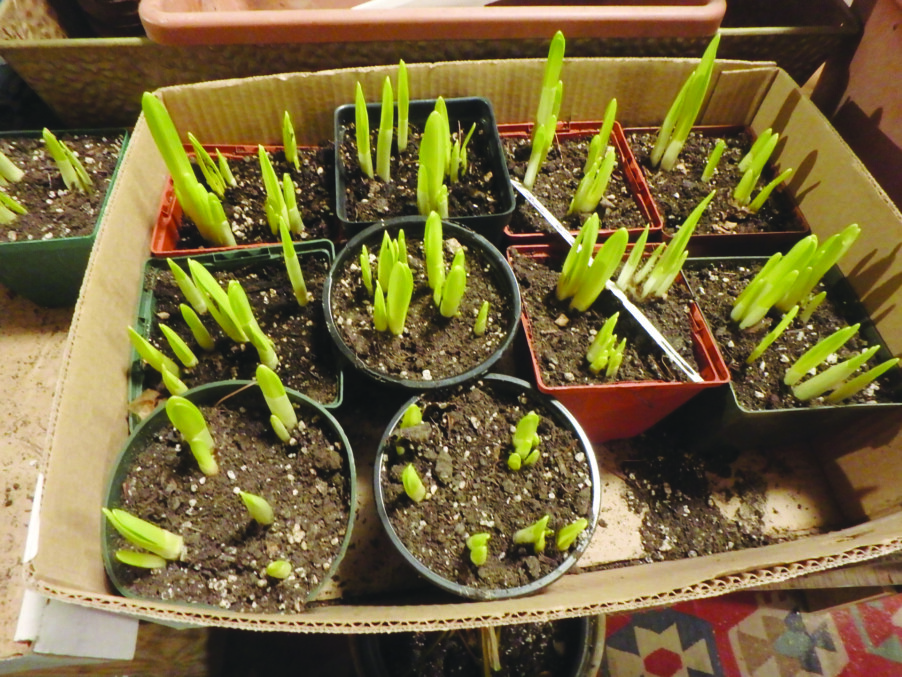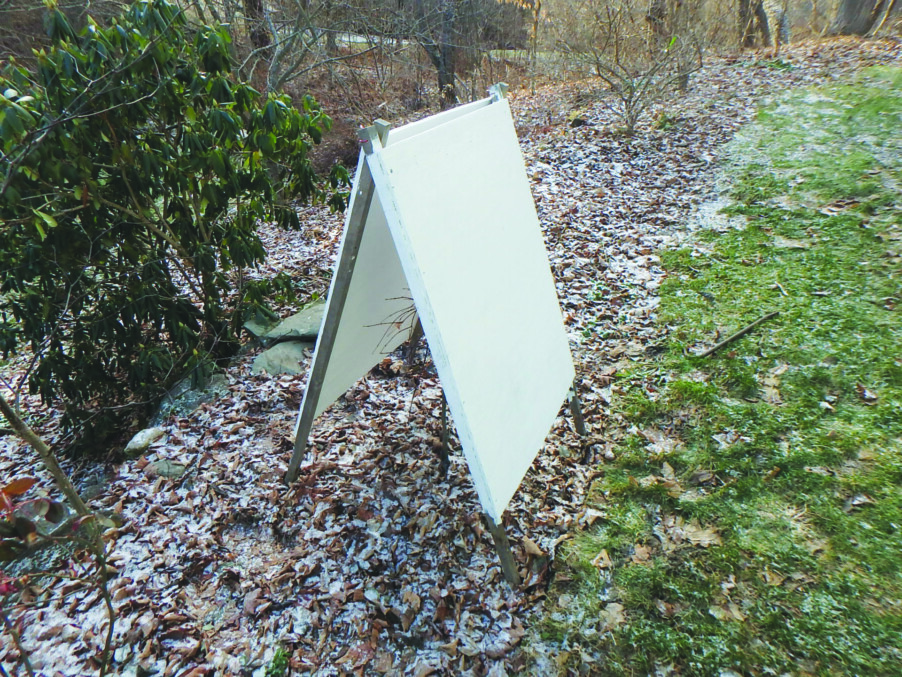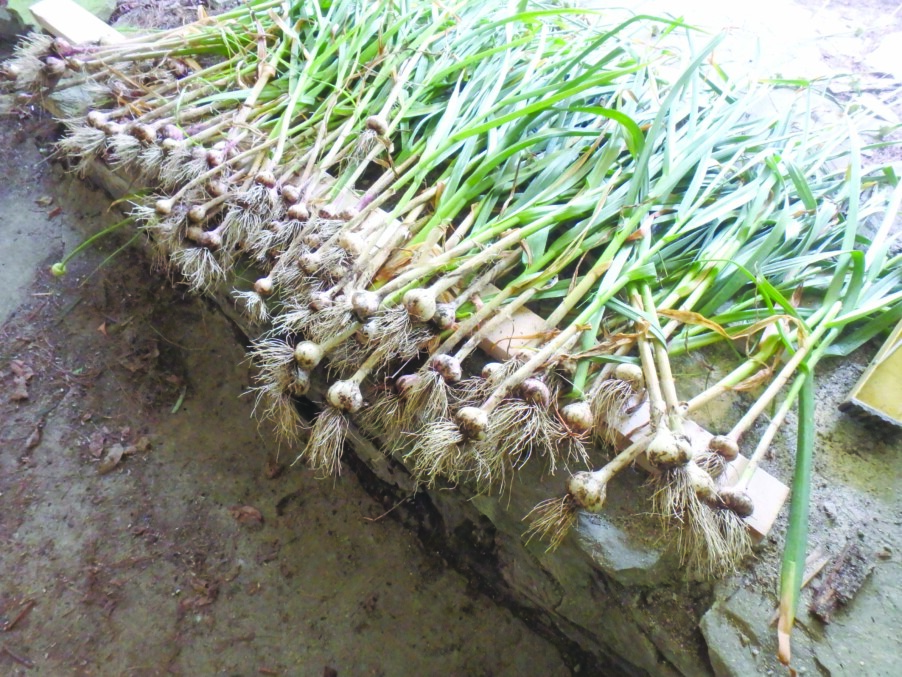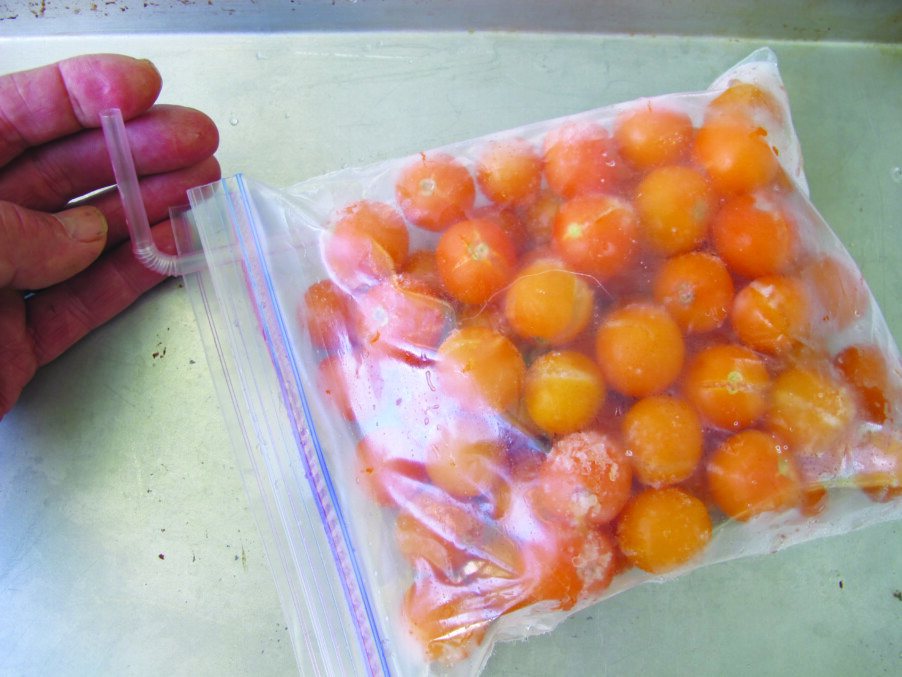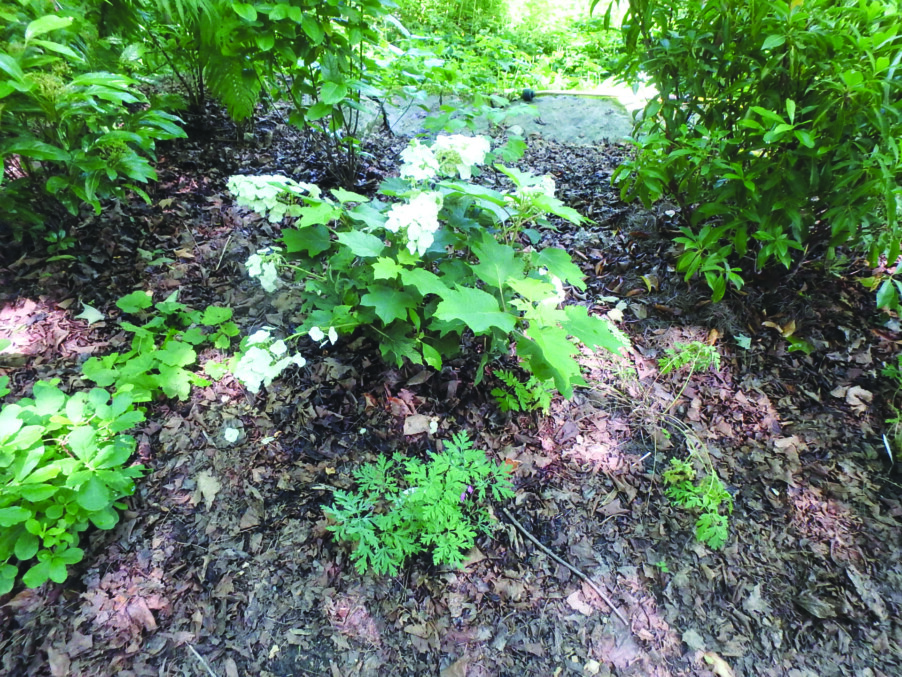It’s flower time
By Henry Homeyer
listings@hippopress.com
Here in Cornish Flat, this seems like an old-fashioned winter. Temperatures have been consistently below freezing, and the ground has had at least a light covering of snow most of the time. No deep snow, the kind that insulates the ground and keeps tender perennials safe, but enough to soothe the eyes when looking at the landscape.
But we gardeners are already thinking of spring. Fortunately, I planted many small pots of Tête-à-tête daffodils last fall and stored them in my basement, which stays at 40 degrees. The foliage is up now, and their roots are pushing through the holes in the bottom of the pots, so I know they are ready to bring up to the warmth of the house. I’ve been putting them in sunny windowsills, and many are blooming — and ready to give away. For me, this is a spring ritual: giving 4-inch pots of flowers to friends and neighbors.
If you are hungering for spring, you might consider going to a spring flower show. Unfortunately, many of the spring shows have given up. Boston no longer has its extravaganza, so the Connecticut show in Hartford is now New England’s big event. It has many nice displays and many great classes to attend. This year it is Feb. 20 to Feb. 23.
Then there is one of my favorites, the Vermont Flower Show in Essex Junction, Vermont, March 7 to March 9. It’s small enough to see everything in one day, but has lots to offer.
In Rhode Island there is the Home Show from April 10 to April 13, and it has a flower and garden portion, though I have not been down to Providence since the big flower show folded its tent in 2016.
For the travel-inclined there is the Philadelphia show, March 1 to March 9. It has been a spring tonic since 1829. The poinsettia was introduced to American gardeners at that first show, and Ben Franklin may have attended that year. Go on a weekday for smaller crowds, and be prepared to spend a lot but to have a lot of fun.
February is the month I go through my seed packets to see what I need to buy. Most vegetables and flowers stay viable for three years. Exceptions to that rule are all onion-family seeds and parsnips, so I buy them each year. I’ve found that shallots do very well for me and keep longer than onions in the winter, so I will buy new seeds and plant them indoors and keep them under lights starting in early March. Peppers of all sorts need a long time to get big enough to plant outdoors, so I also start them in March. Tomatoes I start in April, usually around the 10th.
This is also the time of year to pay attention to your houseplants. The days are getting longer, roots and shoots are growing, and they need more water. If you are trying to overwinter a rosemary plant, double the water it gets. A fully dry rosemary is a dead rosemary, and late February or early March is the time of year most of us kill ours. I admit to failing with rosemary by keeping to my weekly watering schedule.
If you have the mid-winter blues, buy yourself some nice cut flowers at your local florist. I prefer to buy from a florist, as they generally take better care of their flowers than big box grocery stores. Many years ago I went to the Boston flower market — leaving at 5 a.m. — with a friend who owned a florist shop to buy flowers for her shop. The flower market was the size of a football field and had every kind of flower you could imagine. What fun that was!
Some years ago the flower trade got a bad reputation because many of the flowers came from Colombia, South America, where the growers used pesticides liberally and paid their workers a pittance. But I believe that now many flowers in winter are grown in the States and done so with environmentally sound practices. You can always ask your florist where their flowers come from.
If you want cut flowers that last a long time in a vase, try alstromeria or lisianthus. Both hold up very well. Also excellent are chrysanthemums, asters, sea lavender and bells of Ireland.
Then there are a couple of gorgeous potted flowers that bloom for a long time at this time of year: cyclamen and Phalaenopsis orchids. The key to these is to minimize watering and to keep them out of direct sunlight. The cyclamen are cheap enough that you can compost them when they are done blooming (in eight to 10 weeks). Phalaenopsis orchids are more expensive but can be saved from year to year.
Lastly, this is a good time of year to think about your outdoor gardens and how you can improve them, come spring or summer. Start by looking out your favorite window. What do you see now that gives you joy? If you only grow flowers, the landscape is bleak.
Think about trees, shrubs and decorative grasses that you could add to the landscape. Would a nice miniature or weeping conifer fit into a perennial bed? A Merrill magnolia in the middle of your lawn could offer a nice shape and buds and bark that please you. It will bloom magnificently with large double white blossoms in April. It will give you something to look forward to. And after all, isn’t that part of the reason why we all garden?
You can reach Henry at henry.homeyer@comcast.net.
Featured photo: These daffodils are ready to bloom on a sunny windowsill. Photo by Henry Homeyer.

